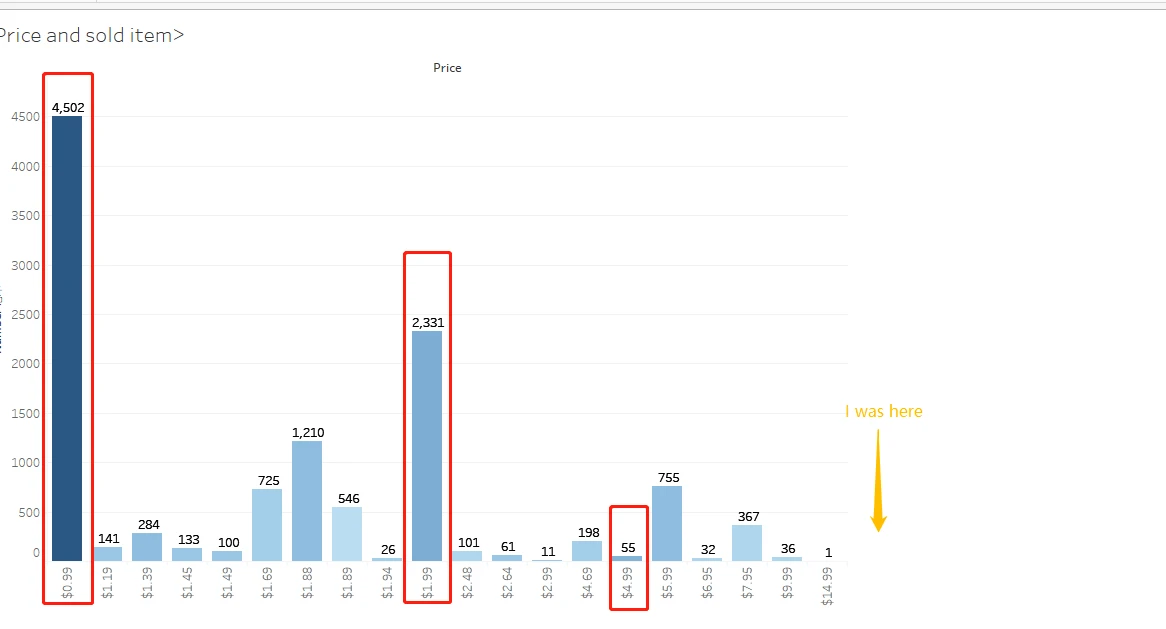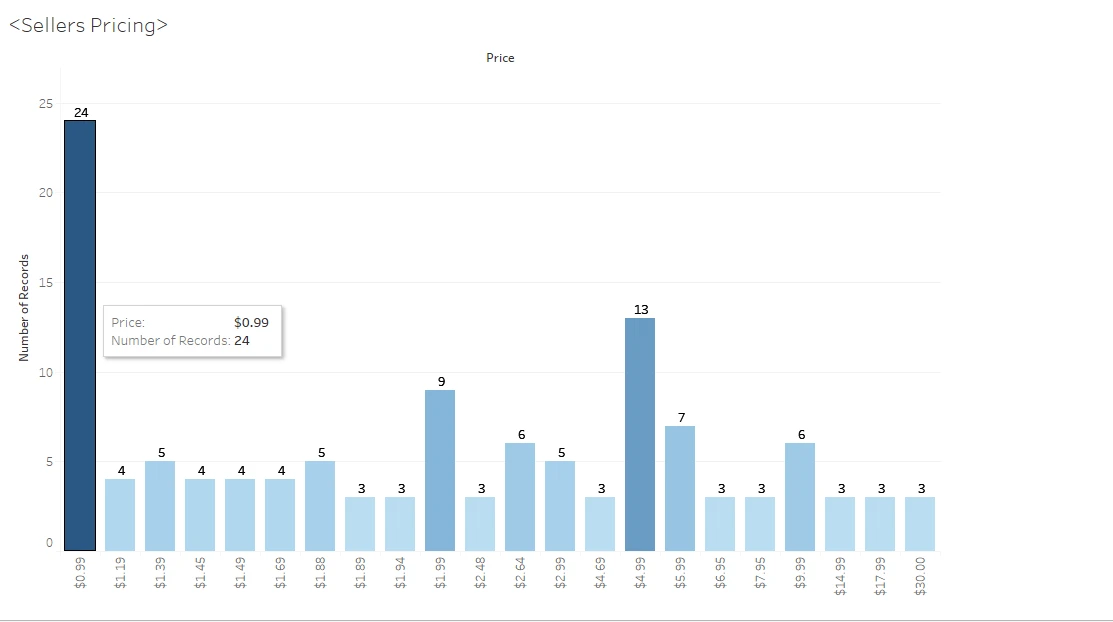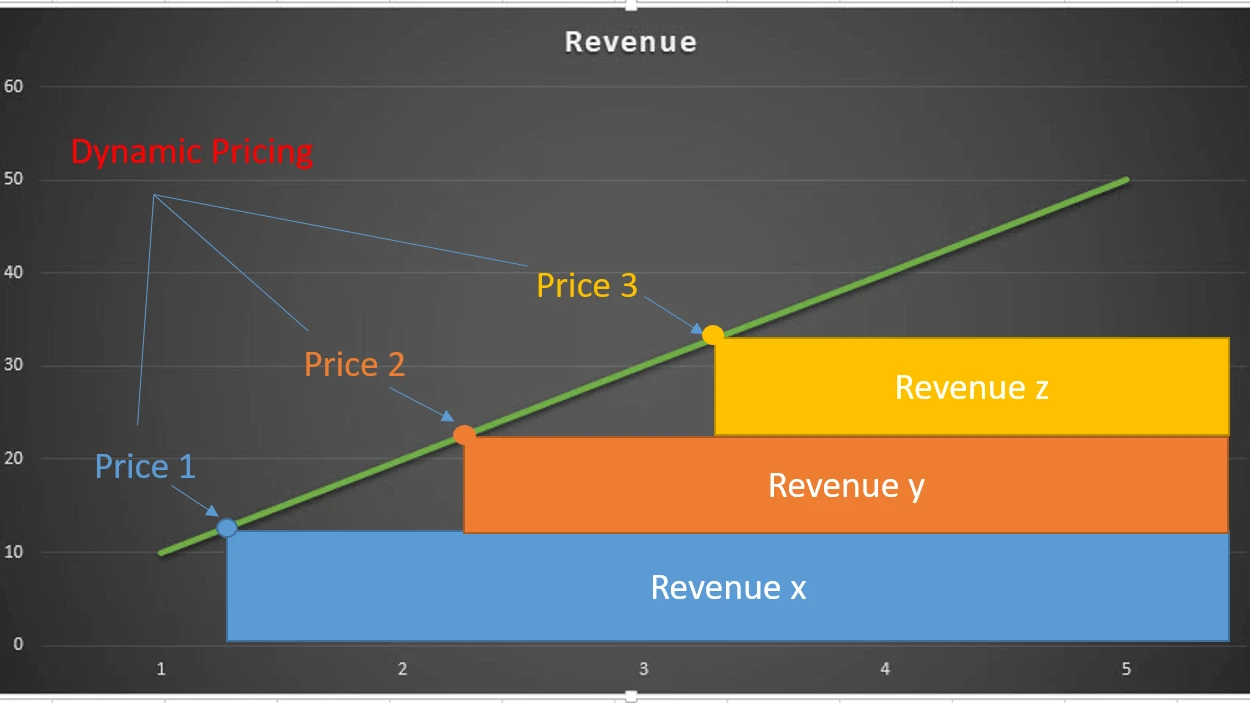A failure story: Suppose you have 50 pairs of Thug life sunglasses which cost you $33 in total. Based on cost-based pricing for e-commerce, the retail price for each pair should be the sum of unit manufacturing cost and unit marginal profit.
Cost + Markup = Listing price
Then you do the calculation accordingly:
- $0.7 material cost, ($30/50 pairs)
- $4.39 overhead cost, (shipping cost to buyers)
- $0.7 + $4.39 = $5.09 Total cost
This is the first time you sell things on eBay. Being naive and greedy, you set the markup as 95% of the cost. The retail price is $5.09 * 195% = $9.95 on eBay.
I was actually that seller in the story. You could probably foresee the result that there was not a single person would buy the sunglasses for six straight months, even after I marked the price down to $4. It seems obvious that if you drop the price, people will come and look at your listing. However, this is a huge misconception for many e-commerce sellers and companies. You probably have the capital to undercut other competitors by selling at a lower price and holding the competitiveness, but this will only put you in a vulnerable position in the long run.
We all know that pricing correctly is crucial for e-commerce. Around 90% of online consumers would browse different online stores to compare the price before they make a purchase. As an e-commerce seller, how can we set an optimal price that holds competitiveness while making a decent profit?
The following is a three-step strategy for new sellers to master an e-commerce business.
Step 1. Set the optimal price
The optimal price is the price that can maximize profit. If I ever looked up the competitive price before dumping the money, I would have a smarter marketing strategy to set the optimal price. First, I scrape eBay using Octoparse and get the information about the price, number of sold, and sellers of Thug life sunglass/8 bit pixel sunglass (the same product with different tags).
Then I clean the data by filtering out small numbers. The most popular price is $0.99 with 4502 items sold. The second most popular is $1.99 with 2331 items sold. The price area between the two, and beyond $1.99 is not so welcomed. The top three popular prices by consumers are $0.99, $1.88, and $1.99

Let’s look at the number of sellers at different prices:

The top three popular prices for sellers are $0.99 with 24 sellers, $1.99 with 9 sellers, and $4.99 with 24 sellers. If I stick to $10, I run myself into a dead end. It is not surprising that nobody would buy a single pair of sunglasses from me unless I have a group of loyal customers. Now let’s do the calculation:
Sunglasses with $0.99 has the greatest market demand, but there is little room for you to grow, plus less total revenue comparing to $1.99. To conclude, $1.99 is the optimal price.
Step 2. Set dynamic pricing
As mentioned earlier, the cost-based pricing is the easiest way to determine the price by simply adding up the markup to the product. It works great in a traditional business model that involves transactions between buyers and sellers. However, such over-simplification would mislead sellers to ignore other competitors in the market. For example, if you hold a static price at Price 1, you can only gain X amount of revenue and you miss the part of Y and Z.

Dynamic pricing means to set a flexible price in response to market change and competition status. In other words, you are able to set at an optimal price by constantly monitoring the market. Ideally, if you covered the market with Prices 1,2,3,4, etc, you would be able to obtain the sum of revenue X, Y, Z and etc.
To set a dynamic price you need to:
- Always show discount pricing
Remember Black Friday? Smart people don’t sell their products with a price that puts their business at risk. The key here is to keep your marginal profit loss to $0 in order to get your customers to the door.
- Bundle pricing
This strategy is very common. Both psychological and economic theories come into play. Bundled products increase perceiving values. You see this bundle option on Amazon frequently. “Nickel and Dimming?” Just get what it tells you.
- Loss-leader pricing
It’s a tactic to get you on their websites with few items at a very low price. Once you get hooked, more likely you would buy other items with a regular or higher price. A good example of this is the inkjet printers. A printer nowadays is an affordable purchase, for instance, $29.99. However, once a person buys a printer and happily prints many pages at home, it is not hard later to find out the ink refill is more expensive than the printer.
- Penetration Pricing
Penetration pricing means to set a low initial price for a new product, hoping that people will buy the product and become loyal. It is a common strategy used to get long-term profitability by increasing the market share of a product. For example, you may have received a sample packet of moisture lotion along with a 10% discount coupon. It is cheaper with the coupon to buy the lotion comparing other brands with the same quality. The idea here is to make you try their lotion and become loyal.
Step 3. Keep track of the overhead cost
In order to maximize your profit, you’d better calculate the overhead cost to get a better picture of your pricing strategies. The most common overhead costs are:
- Rent
- Management
- Labor
- Utility
- Tax
- Insurance
- Marketing
To conclude, pricing is essential for any e-commerce sellers and companies. Thus, it is important to monitor the price on an hourly or daily basis. Octoparse is a great free tool for you to scrape data from any e-commerce websites including Amazon, eBay, Costco, B&H Photo, Frys, and many more. You can schedule a scraping task to achieve real-time price monitoring. Last but not least, these strategies are not mutually exclusive. It works best when you apply these strategies altogether.
If you’re finding a data service for your project, Octoparse data service is a good choice. We work closely with you to understand your data requirement and make sure we deliver what you desire. Talk to an Octoparse data expert now to discuss how web scraping services can help you maximize efforts.
For more information, please check out our official website octoparse.com!




